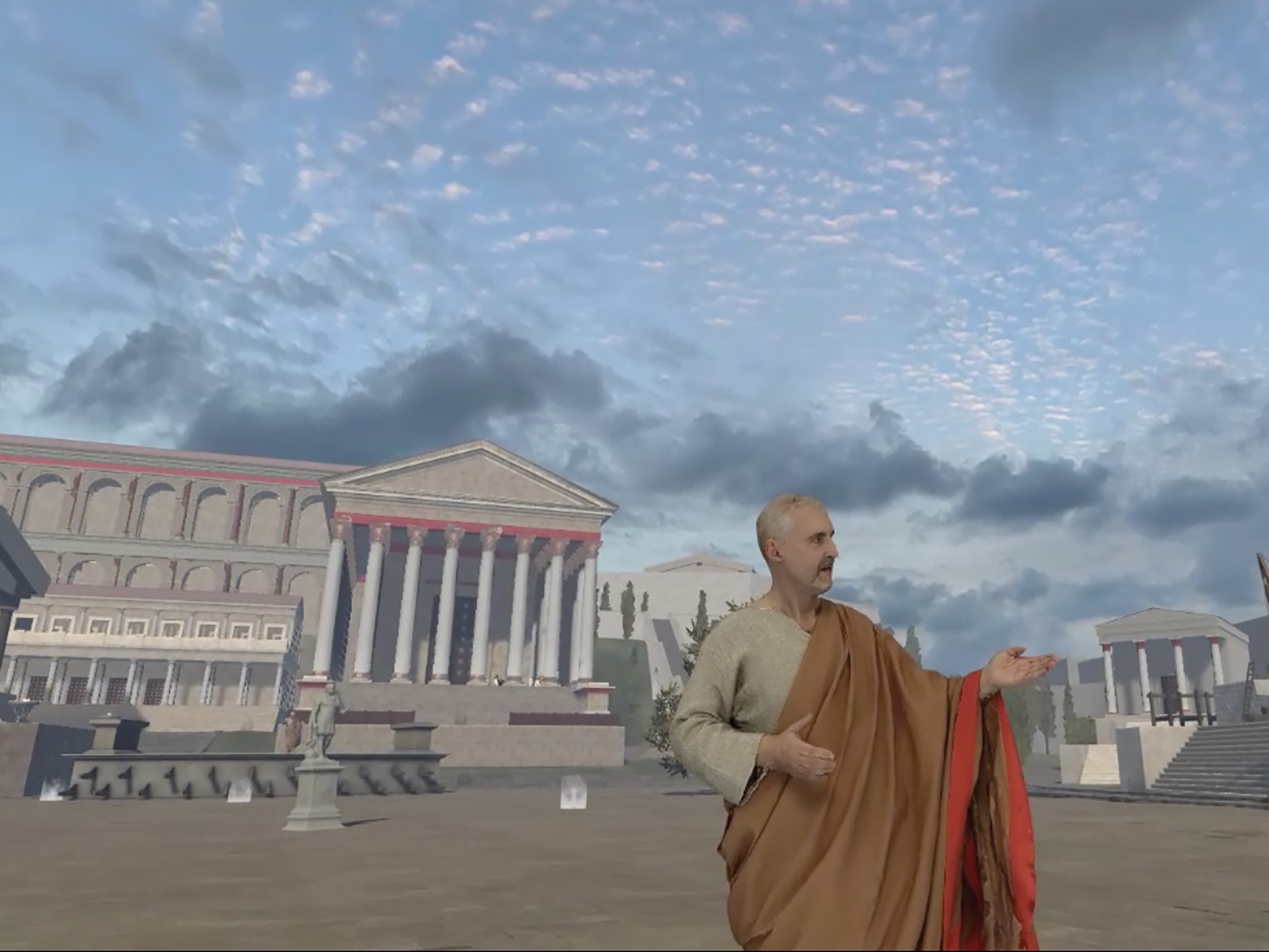Film University Babelsberg KONRAD WOLF - A virtual tour of the Roman Forum

Babelsberg Film University in Potsdam has digitally reconstructed the Roman Forum of ancient Rome as a scientific experience. In ‘Virtual History’, interested visitors can stroll through a virtual world, learn a lot about antiquity and experience history with a completely new sensory perception.
It is the morning after the assassination of Gaius Julius Caesar (16 March 44 BC). The light plays around the many marble columns and temple roofs. You find yourself in an empty square with columns of smoke rising from nearby temples and houses. The first birds can be heard circling in the sky. Sounds are coming from all parts of the Forum and the whole city. Moving across the Roman Forum, numerous information points invite you to explore the traces of ancient history directly on site.
You can choose between exciting information, playing the classic Roman game Rota, a melodious tune on an ancient kithara or you can test your knowledge about the buildings surrounding the impressive square.
A visit to ‘Virtual History’, a joint project by the Film University Babelsberg KONRAD WOLF and Humboldt University Berlin, could look something like this. This ambitious pilot project has been successfully implemented thanks to funding from the European Regional Development Fund (ERDF).
An interdisciplinary team of media professionals and antiquity researchers came together to recreate the ancient Roman Forum in virtual reality (VR) on the basis of archaeological data and the surviving records of Cicero, Rome’s most famous orator, bringing it back to life more than 2,000 years later.
Whatever their interests, guests can learn scientific facts about the respective site at virtual info points or simply experience the imposing Roman Forum and the many moving figures in video and sound.
The pioneering role of digital knowledge transfer
In light of the advance of digitalisation, the project shows how history can be taught and experienced in a playful way in the future. The innovative design and VR presentation allows ‘time travellers’ to become completely ‘immersed’ in the archaeological sources.
This not only creates a unique learning experience, but also stimulates scientific discourse by questioning and reviewing the findings in the virtual big picture. Interdisciplinary work along the lines of ‘Virtual History’ could change the way knowledge is imparted in the future.
For further information, visit www.filmuniversitaet.de
It is the morning after the assassination of Gaius Julius Caesar (16 March 44 BC). The light plays around the many marble columns and temple roofs. You find yourself in an empty square with columns of smoke rising from nearby temples and houses. The first birds can be heard circling in the sky. Sounds are coming from all parts of the Forum and the whole city. Moving across the Roman Forum, numerous information points invite you to explore the traces of ancient history directly on site.
You can choose between exciting information, playing the classic Roman game Rota, a melodious tune on an ancient kithara or you can test your knowledge about the buildings surrounding the impressive square.
A visit to ‘Virtual History’, a joint project by the Film University Babelsberg KONRAD WOLF and Humboldt University Berlin, could look something like this. This ambitious pilot project has been successfully implemented thanks to funding from the European Regional Development Fund (ERDF).
An interdisciplinary team of media professionals and antiquity researchers came together to recreate the ancient Roman Forum in virtual reality (VR) on the basis of archaeological data and the surviving records of Cicero, Rome’s most famous orator, bringing it back to life more than 2,000 years later.
Whatever their interests, guests can learn scientific facts about the respective site at virtual info points or simply experience the imposing Roman Forum and the many moving figures in video and sound.
The pioneering role of digital knowledge transfer
In light of the advance of digitalisation, the project shows how history can be taught and experienced in a playful way in the future. The innovative design and VR presentation allows ‘time travellers’ to become completely ‘immersed’ in the archaeological sources.
This not only creates a unique learning experience, but also stimulates scientific discourse by questioning and reviewing the findings in the virtual big picture. Interdisciplinary work along the lines of ‘Virtual History’ could change the way knowledge is imparted in the future.
For further information, visit www.filmuniversitaet.de

